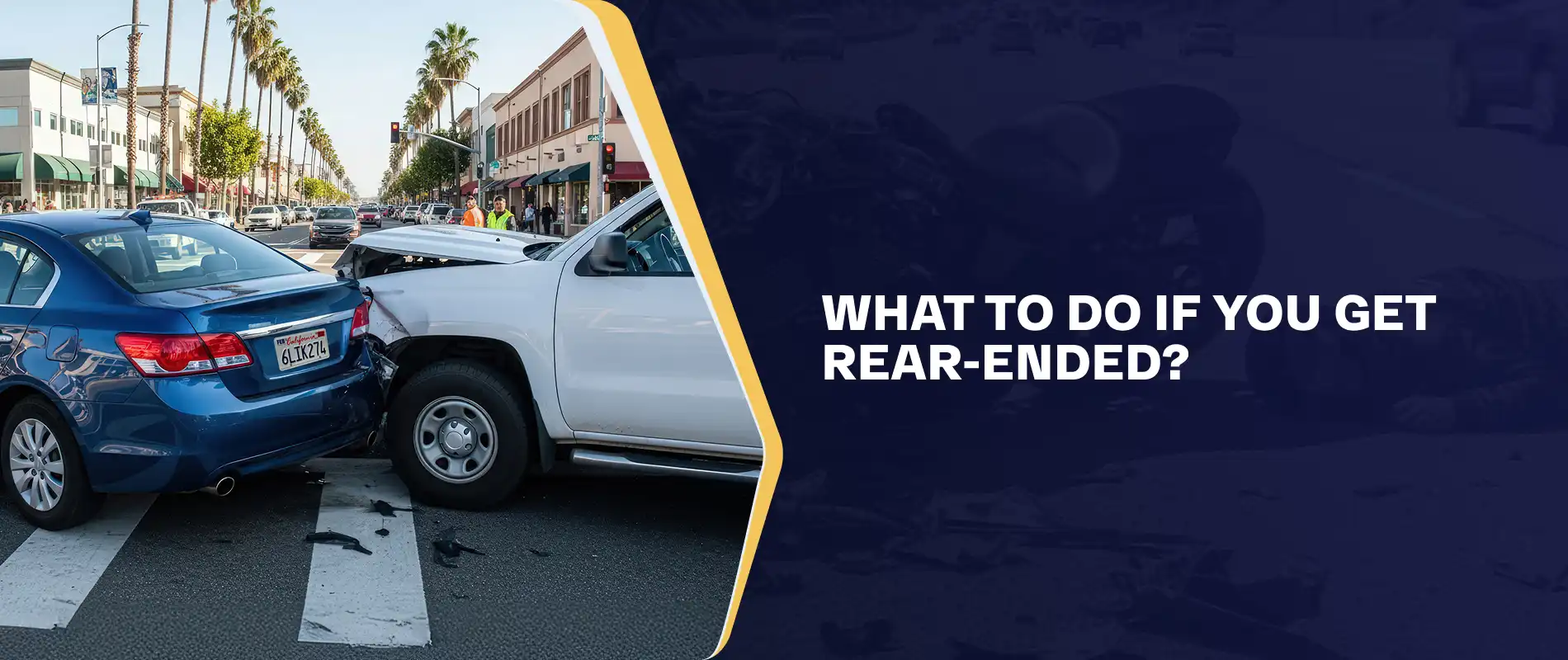Rear-Ended? Your Step-by-Step Guide To Next Steps

Welcome to your ultimate source for breaking news, trending updates, and in-depth stories from around the world. Whether it's politics, technology, entertainment, sports, or lifestyle, we bring you real-time updates that keep you informed and ahead of the curve.
Our team works tirelessly to ensure you never miss a moment. From the latest developments in global events to the most talked-about topics on social media, our news platform is designed to deliver accurate and timely information, all in one place.
Stay in the know and join thousands of readers who trust us for reliable, up-to-date content. Explore our expertly curated articles and dive deeper into the stories that matter to you. Visit Best Website now and be part of the conversation. Don't miss out on the headlines that shape our world!
Table of Contents
Rear-Ended? Your Step-by-Step Guide to Next Steps
Being rear-ended is a jarring experience, leaving you shaken and potentially injured. Knowing what to do immediately after a rear-end collision can significantly impact your insurance claim and your overall well-being. This comprehensive guide provides a step-by-step plan to help you navigate the aftermath of a rear-end accident.
Immediate Actions After a Rear-End Collision:
-
Ensure Safety: Your immediate priority is safety. Turn on your hazard lights, move your vehicle to a safe location if possible (off the road), and assess injuries. If anyone is injured, call emergency services (911) immediately.
-
Document the Scene: Before moving your vehicles, take photos and videos of the damage to all involved vehicles, including license plates. Capture the surrounding environment, showing road conditions, traffic signals, and any visible contributing factors to the accident. Consider using a panorama feature to get a complete view of the scene.
-
Gather Information: Exchange information with the other driver(s) involved. This includes names, addresses, phone numbers, driver's license numbers, insurance company information (policy number and claim number if available), and vehicle information (make, model, and license plate number). Obtain contact information from any witnesses.
-
Report the Accident: Report the accident to your insurance company as soon as possible. Many insurance companies offer 24/7 claims reporting services. Knowing your policy details beforehand can streamline this process.
Following Up After the Accident:
-
Seek Medical Attention: Even if you feel fine immediately after the accident, seek medical attention. Whiplash and other injuries may not manifest immediately. A thorough examination can prevent future complications. Document all medical treatments and expenses.
-
File a Police Report: Filing a police report provides an official record of the accident. This is crucial for your insurance claim and any potential legal action.
-
Contact Your Insurance Company: Provide your insurance company with all the information you gathered, including the police report number, medical records, and repair estimates. Be prepared to answer questions thoroughly and accurately.
Understanding Your Insurance Claim:
- Liability: In most cases, the driver who rear-ended another vehicle is at fault. However, exceptions exist, such as if the driver in front brakes suddenly and unexpectedly. Your insurance company will investigate to determine liability.
- Uninsured/Underinsured Motorist Coverage: If the at-fault driver is uninsured or underinsured, your uninsured/underinsured motorist coverage will help cover your expenses.
- Comprehensive and Collision Coverage: These coverages protect your vehicle from damage regardless of fault. Understanding your policy limits is crucial.
Preventing Future Rear-End Collisions:
- Maintain a Safe Following Distance: The three-second rule is a good guideline.
- Avoid Distracted Driving: Put away your phone and avoid other distractions while driving.
- Be Aware of Your Surroundings: Pay attention to the vehicles around you and anticipate their movements.
Legal Advice: If you are facing difficulties with your insurance claim or if the accident resulted in significant injuries, it is advisable to consult with a personal injury attorney. They can advise you on your legal rights and help you pursue compensation for your losses. [Link to a reputable legal resource or directory].
Remember, taking proactive steps after a rear-end collision protects your rights and facilitates a smoother claims process. Being prepared and organized can significantly reduce stress during a challenging time.

Thank you for visiting our website, your trusted source for the latest updates and in-depth coverage on Rear-Ended? Your Step-by-Step Guide To Next Steps. We're committed to keeping you informed with timely and accurate information to meet your curiosity and needs.
If you have any questions, suggestions, or feedback, we'd love to hear from you. Your insights are valuable to us and help us improve to serve you better. Feel free to reach out through our contact page.
Don't forget to bookmark our website and check back regularly for the latest headlines and trending topics. See you next time, and thank you for being part of our growing community!
Featured Posts
-
 Golden State Warriors Fan Mailbag Assessing Kuminga Horford And Playoff Potential
Sep 07, 2025
Golden State Warriors Fan Mailbag Assessing Kuminga Horford And Playoff Potential
Sep 07, 2025 -
 Afghanistan Earthquake Aftershocks Worsen Injury Toll
Sep 07, 2025
Afghanistan Earthquake Aftershocks Worsen Injury Toll
Sep 07, 2025 -
 Gen V Season 2 A Direct Confrontation Of Campus Culture Wars
Sep 07, 2025
Gen V Season 2 A Direct Confrontation Of Campus Culture Wars
Sep 07, 2025 -
 Underdog Wins How The Cowboys Eagles Opener Became An Nfl Betting Bad Beat
Sep 07, 2025
Underdog Wins How The Cowboys Eagles Opener Became An Nfl Betting Bad Beat
Sep 07, 2025 -
 Unveiling David Bowies Final Creation A London Based Musical
Sep 07, 2025
Unveiling David Bowies Final Creation A London Based Musical
Sep 07, 2025
Latest Posts
-
 Save Big On Nfl Sunday Ticket 2025 Draft Kings Offers 200 Discount And Bonus
Sep 08, 2025
Save Big On Nfl Sunday Ticket 2025 Draft Kings Offers 200 Discount And Bonus
Sep 08, 2025 -
 Cyberpunk 2077 Update Expect A Minor Announcement Tomorrow
Sep 08, 2025
Cyberpunk 2077 Update Expect A Minor Announcement Tomorrow
Sep 08, 2025 -
 Score A 150 Bet Mgm Bonus Cuse 150 In Michigan Labor Day Offer
Sep 08, 2025
Score A 150 Bet Mgm Bonus Cuse 150 In Michigan Labor Day Offer
Sep 08, 2025 -
 150 Bet Mgm Bonus In Michigan Use Code Cuse 150 This Labor Day Week
Sep 08, 2025
150 Bet Mgm Bonus In Michigan Use Code Cuse 150 This Labor Day Week
Sep 08, 2025 -
 Bet Mgm Michigan 150 Bonus With Code Cuse 150 For Labor Day Weekend
Sep 08, 2025
Bet Mgm Michigan 150 Bonus With Code Cuse 150 For Labor Day Weekend
Sep 08, 2025
